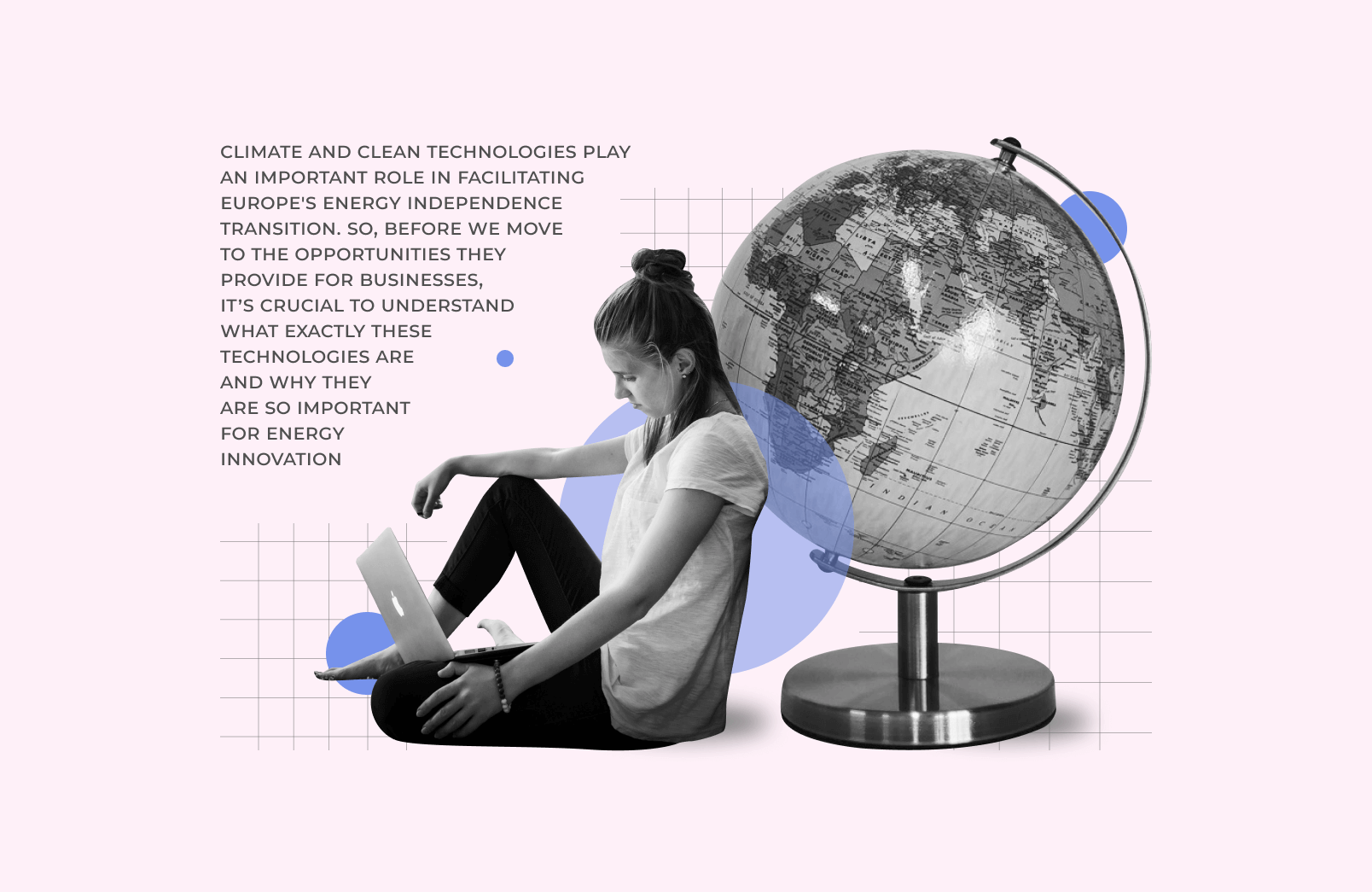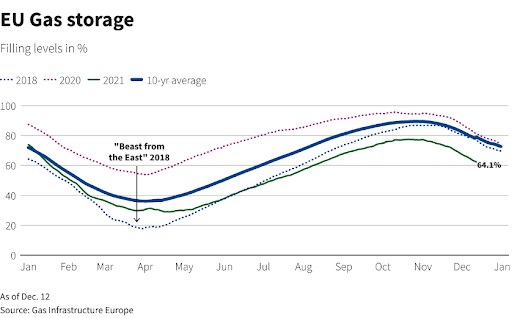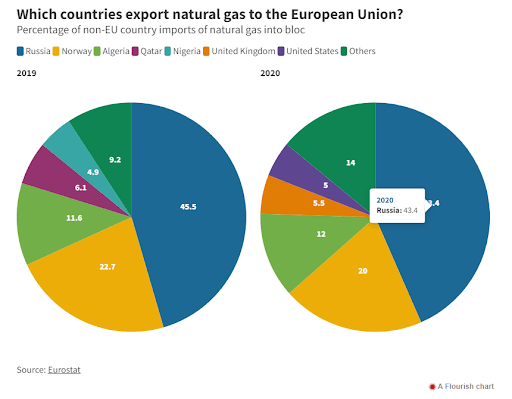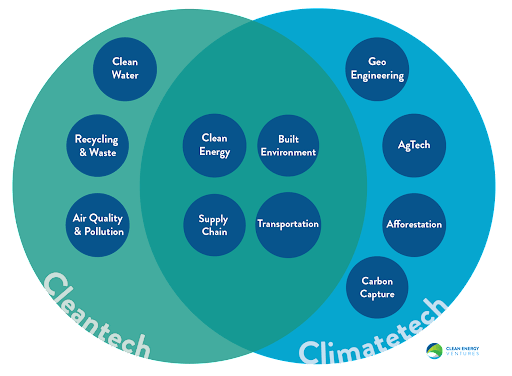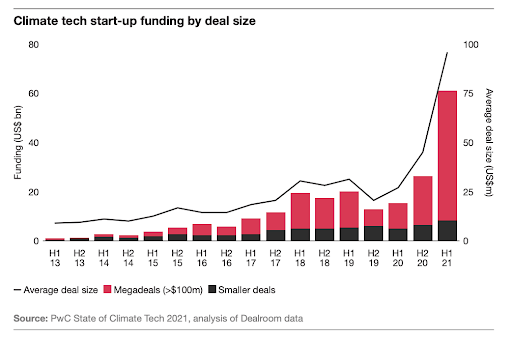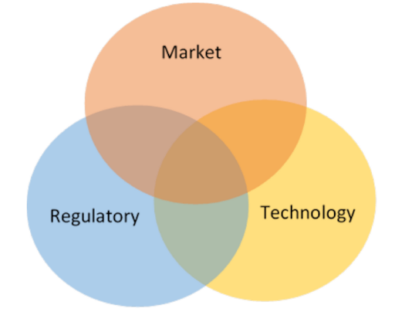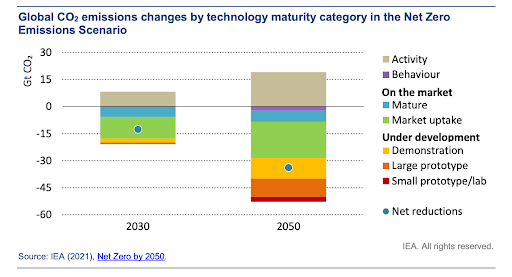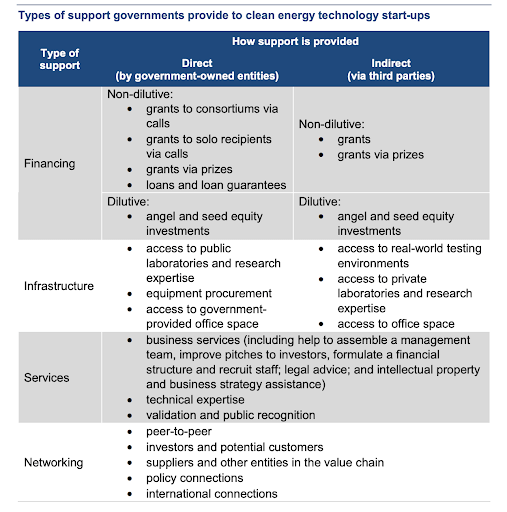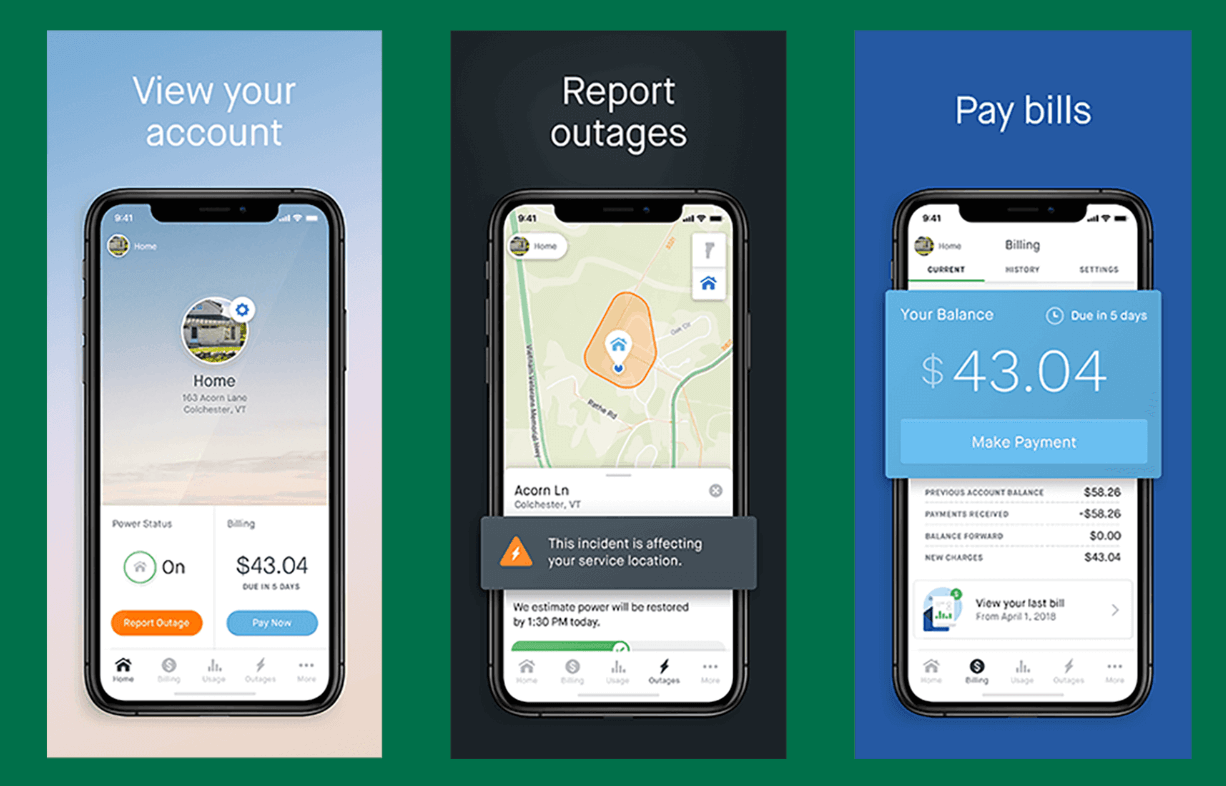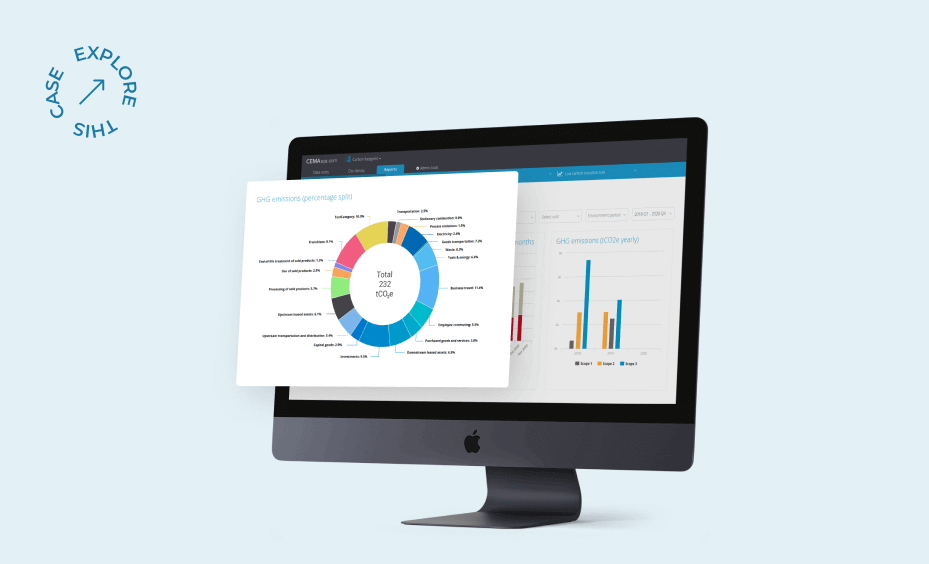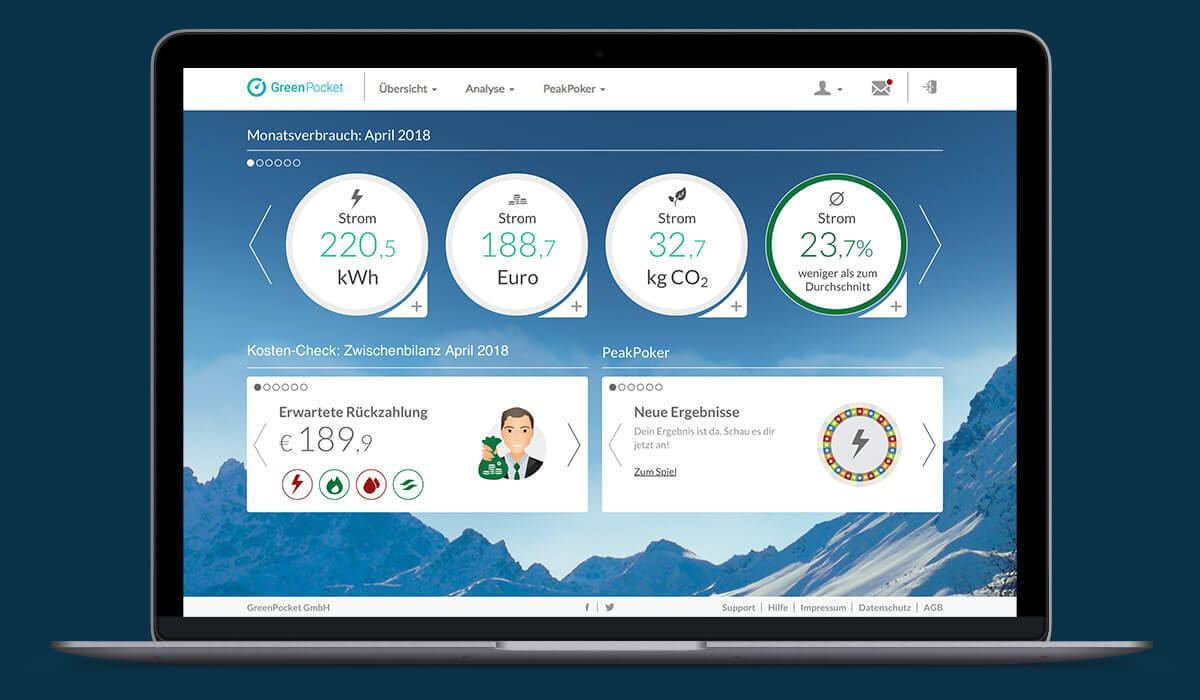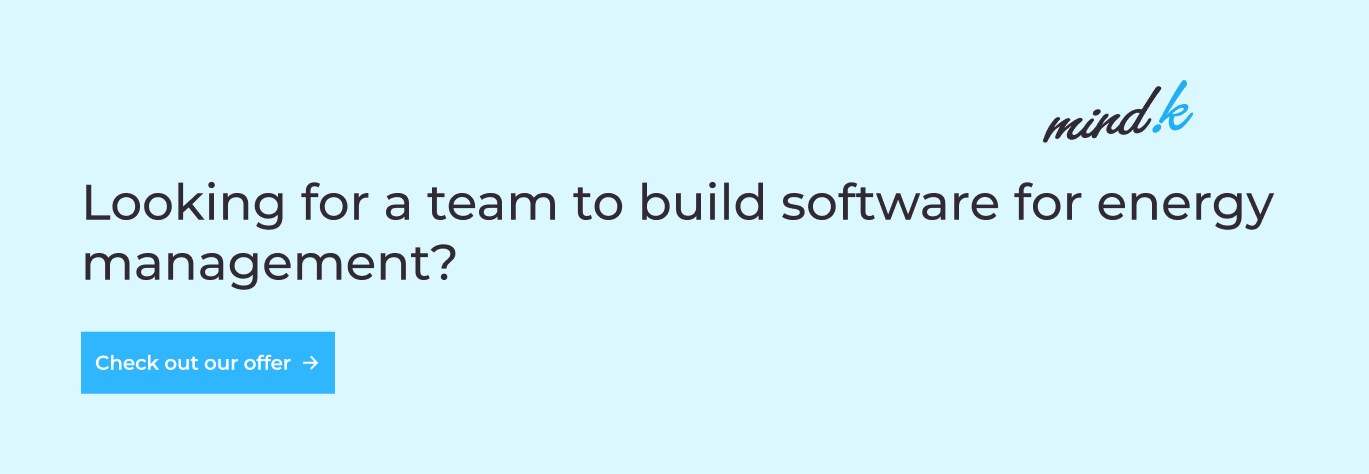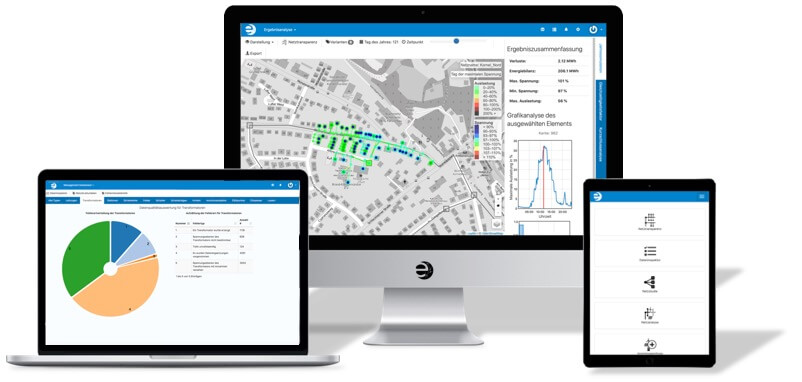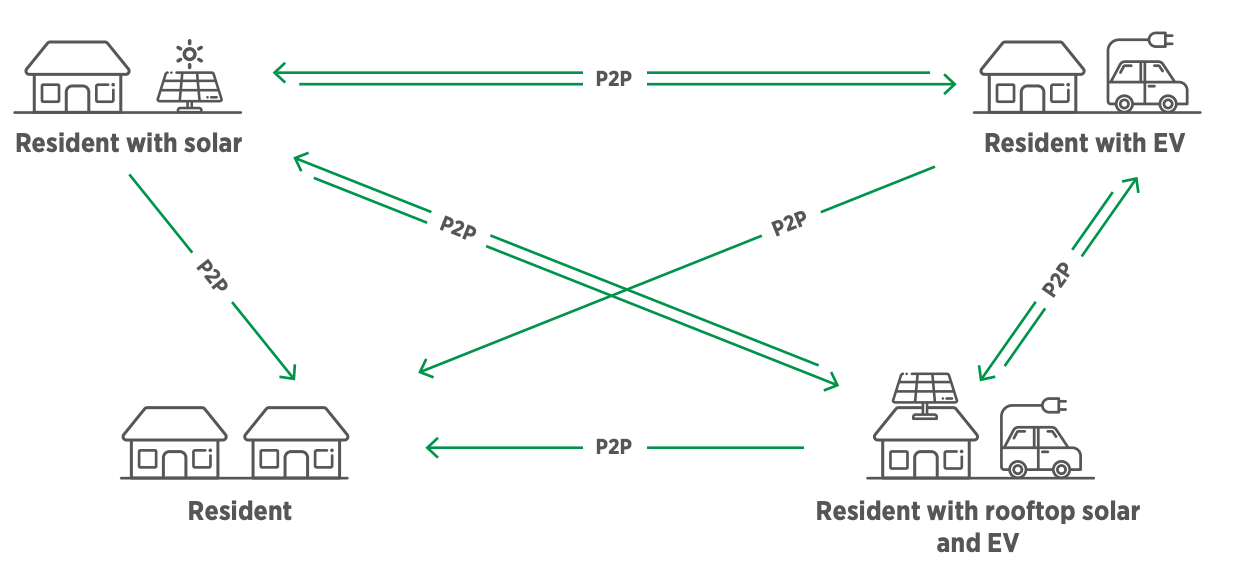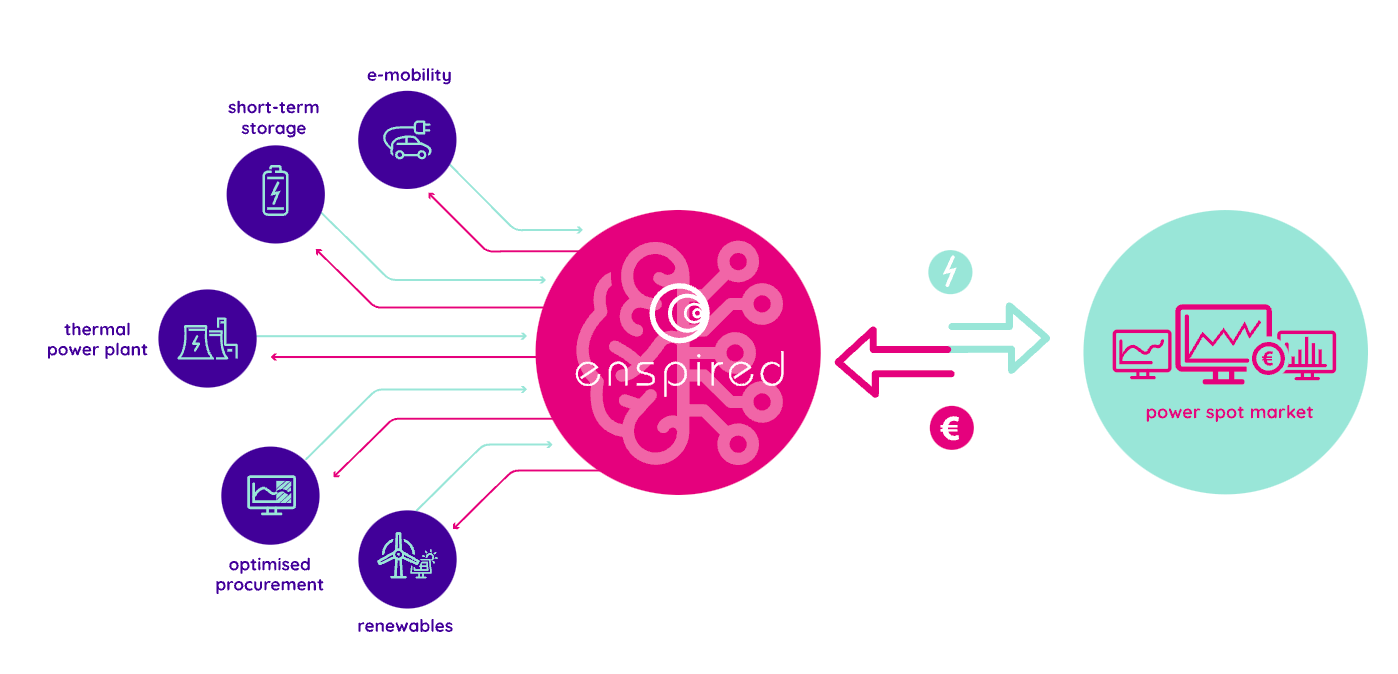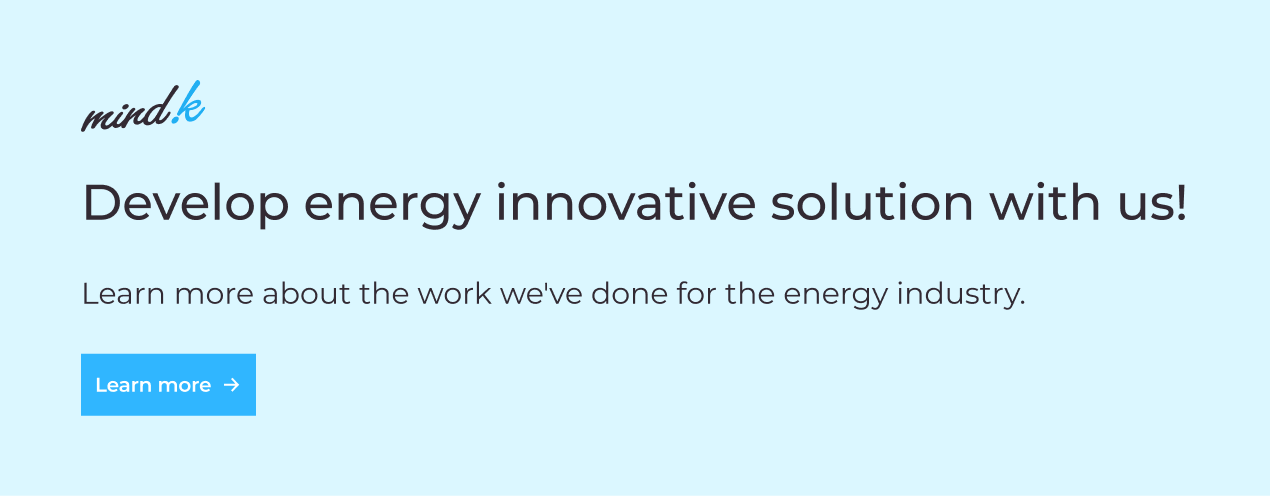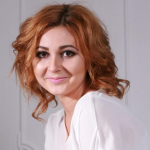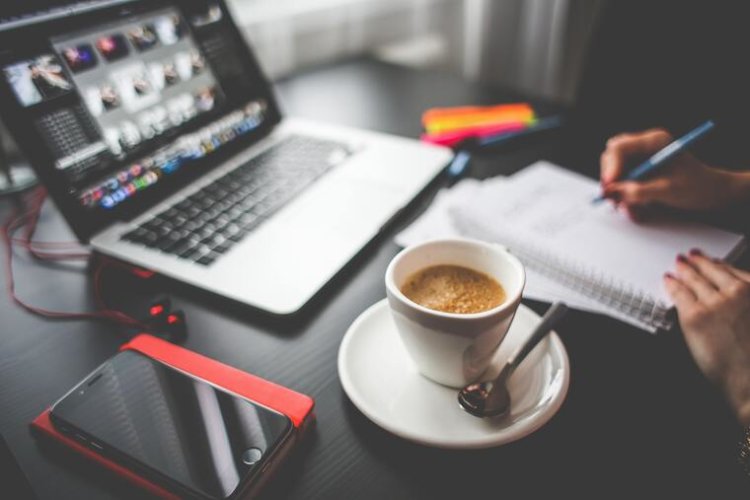In 2025, the European energy market is caught between a rock and a hard place. Following earlier global energy crises in 1973, 1979, 1990, and 2008 gradually the tensions, as well as prices, decreased, and governments switched their attention to other priorities. Thus, the world continued relying on oil and gas. This time, however, we believe, things may be different.
We at MindK have been developing software solutions for more than a decade, but we haven’t seen such high demand for energy and sustainability-focused tech solutions, also known as climate tech, as in the last few years. Investments in climate tech are growing, turning it into a maturing asset class. For instance, in the first quarter of 2021 more than US$60bn was invested in climate tech, which is a 210% increase compared with the year prior.
It looks like we are entering a “brave new world” in terms of energy resources, but this new world requires further innovative energy solutions. To see the bigger picture, let’s find out what the energy crisis in Europe looks like right now, what new opportunities it opens for tech startups, and what challenges the emerging climate tech startups are solving.
European energy crisis – a catalyst for change?
The dynamics of gas prices in Europe in 2021 were overwhelming. After the October wave of growth to $1,800 per 1,000 m3, it seemed like the peak had already been reached. But in December, prices reached a new high – more than $2,200 per 1,000 m3. For the record – on average, the December price tag over the past five years was 10 times lower.
It’s hard to define the main root causes of the EU energy crisis, as there are a number of reasons that lead to a situation like this. Among them is an increased gas demand connected with the economy recovering from the pandemic. After the prices for metals, wood, and other raw materials recorded double-digit growth, it became clear that increases in energy prices was a matter of time. With such high demand and limited supplies, a significant rise in costs was no wonder.
Above that, Europe is reducing its domestic natural gas production. The Netherlands, Europe’s biggest domestic producer of natural gas, began phasing out its main gas field, Groningen, in 2018, influencing the level of gas reserve.
With winter approaching, Europe admitted to having the lowest gas reserves since 2013. In September 2021, the filling rate was only 77%, compared to 95 % in the previous year.
Europe relies heavily on Russia for natural gas imports, which account for more than 43% of total European imports. Russia’s invasion of Ukraine in 2022 made things more complicated.
European countries seek to eliminate their reliance on Russian fossil fuels in five years, and by the end of the year, they hope to reduce their reliance on Russian gas by two-thirds. A 10-point plan to reduce the EU’s reliance on Russian natural gas pays great attention to the deployment of low emission and “clean” energy projects, including wind, solar and similar projects. If Europe keeps its promises, the war in Ukraine might spark one of the most rapid energy shifts in history. Climate-friendly solutions such as promoting energy efficiency, constructing heat pumps and so on may enable such a shift.
Whatever decision Europe makes, growing attention to the acceleration of clean, renewable energy development and deployment is clear. Energy independence has now become a question of national security. This, together with existing climate targets on greenhouse gas (GHG) emissions and the cost competitiveness of renewables, will provide the final push for a “clean” transition.
The power of climate and clean technologies in solving the energy crisis
Climate and clean technologies play an important role in facilitating Europe’s energy independence transition. So, before we move to the opportunities they provide for businesses, it’s crucial to understand what exactly these technologies are and why they are so important for energy innovation.
While the terms cleantech and climate tech may seem like synonyms, they are not. In reality, the terms share common interests but have slightly different goals. While climate technology has its own set of aims based on addressing GHG emissions reduction and the impacts of climate change, cleantech solutions are focused on increasing human efficiency and productivity in production, while minimizing the impact on the environment.
Development, commercialization, and scaling of new technologies, including climate and cleantech, are enablers of Europe’s transition to renewable resources. These technologies will experience a continual flow of public funds in addition to record-breaking levels of private capital in 2021 and €1 trillion of funding that has already been committed to sustainable investments by the EU Green Deal. But is it enough?
In order not to leave clean technologies struggling on their own, the market demand and funding are not enough. There is one more component that complements the picture – regulations. There is a need to create a supportive system for clean technology that can provide the necessary support and stimulus. Failure to succeed on any of these fronts can make innovations difficult.
Successful diffusion of clean technologies
Role of the government in energy innovation support
Governments are pretty resolute to provide further supportive legislation for clean-energy startups. Based on the report by International Energy Agency (IEA), governments admit that:
- it’s impossible to reach energy and climate goals without more innovation: as the energy sector accounts for around three-quarters of worldwide GHG emissions, it is critical to accelerate clean energy technology innovation in order to attain net-zero emissions by 2050.
- startups significantly stimulate energy innovation: fast-growing startups are playing a big role in generating new ideas and simplifying the transfer of solutions to new applications and social concerns, as energy technologies now increasingly rely on digital and “deep-tech” breakthroughs.
- clean energy startups are underfunded by private capital, thus more funding is required: to become sustainable enterprises, energy technology innovators must typically overcome numerous technical, commercial, and regulatory challenges, which are incompatible with the short-term horizons of most venture capital funding.
- nurturing startups to maturity is a foundation for local economic prosperity: government funding (including local ones) for energy innovation usually has two main policy objectives: economic renewal and growth of the region. For example, Tesla’s Fremont facility in California employed 3000 employees ten years after its founding.
- clean energy transitions represent huge market opportunities: according to the IEA’s Net Zero Emissions Scenario, yearly clean energy investments must grow more than threefold by 2030 which represents a once-in-a-lifetime opportunity for the world’s top inventors to join developing value chains with immense future potential.
So, what is behind the understanding of the importance of clean energy technologies? What should governments actually do for clean energy startups to evolve? Governments can support clean energy technology startups in several valuable ways. The support can be divided into four main categories: financing, infrastructure, services, and networking.
In terms of these categories, the governmental initiatives might include either direct or indirect support. Direct support presupposes support without involving any intermediaries, while indirect support is done by funding intermediaries like commercial incubators or funds. Governments are frequently forced to choose between direct and indirect assistance.
“How Governments Support Clean Energy Start-Ups” by IEA
Grants are the most popular mechanism for governments to fund renewable energy technology startups. Public grants are transfers of public capital from a government institution to a recipient, either directly or indirectly through a third party such as an incubator.
Another mechanism worth mentioning are loans and loan guarantees, however, they are more relevant for those companies that need capital to expand their business. Energy technology businesses with a software-based product (especially if their product does not require time-consuming regulatory approval) and businesses that simply want to maintain control over their path to profitability may fall into this category.
Some of the loan conditions do not presuppose money back if the startup fails. `For example, some years ago the Swedish Energy Agency offered a grace period for repayment and didn’t require payback if the loan failed to help getting the associated product to market. Then they turned from loans to grants.
The Israel Innovation Authority (IIA), similar to Swedish Energy Agency, does not require loan payback unless the funded project is successful, and if royalties arise from the project or equipment sponsored by the loan, the IIA receives about half of the royalties as loan repayment.
The above-mentioned report by IEA shows a vast majority of support options from the government. It also illustrates that most countries currently have substantial networks of private and university-affiliated incubators and accelerators, as well as a variety of financial resources ranging from angel and venture capital funds to private equity and corporate financing.
It also reveals that in the last five years, there has been a surge of policy experimentation aimed precisely at identifying market shortcomings for clean energy technology commercialization. While this experimentation has yet to yield a comprehensive list of agreed-upon best practices, it demonstrates how government initiatives can be used to accelerate energy innovations.
Top 5 energy challenges solved by innovative energy startups
The energy sector faces a number of challenges that require relevant and innovative solutions. Here are only some of the key global energy challenges that have already been targeted by the clean energy startups:
Carbon neutrality
Carbon neutrality focused on eliminating CO2 emissions is the key goal of the startups all over the world. Most of these startups solve these problems either by leveraging the clean energy sources or renewables like wind, sun, and so on, or by trying to eliminate the GHG emission as much as possible to be compliant with the sustainability norms. Here are a few examples of innovators in this sector.
Green Mountain Power is a renewable startup based in Vermont. It provides electricity to three-quarters of the homes and businesses in the state through hydro, solar, and nuclear power stations. Their energy supply is 63% renewable and almost 100% carbon-free. The company also provides a mobile app that allows managing the account, tracking energy consumption, reporting outages, and even paying the electricity bills.
Another example of startups that are focused on lowering the carbon footprint is sustainability solutions. Sustainability solutions are tools created to address the most pressing social and environmental challenges of our time.
For instance, startup Aclymate allows smart and medium-sized businesses to account for their climate footprint. The system allows taking a granular, detailed look at the emissions to learn where the venture can start reducing them.
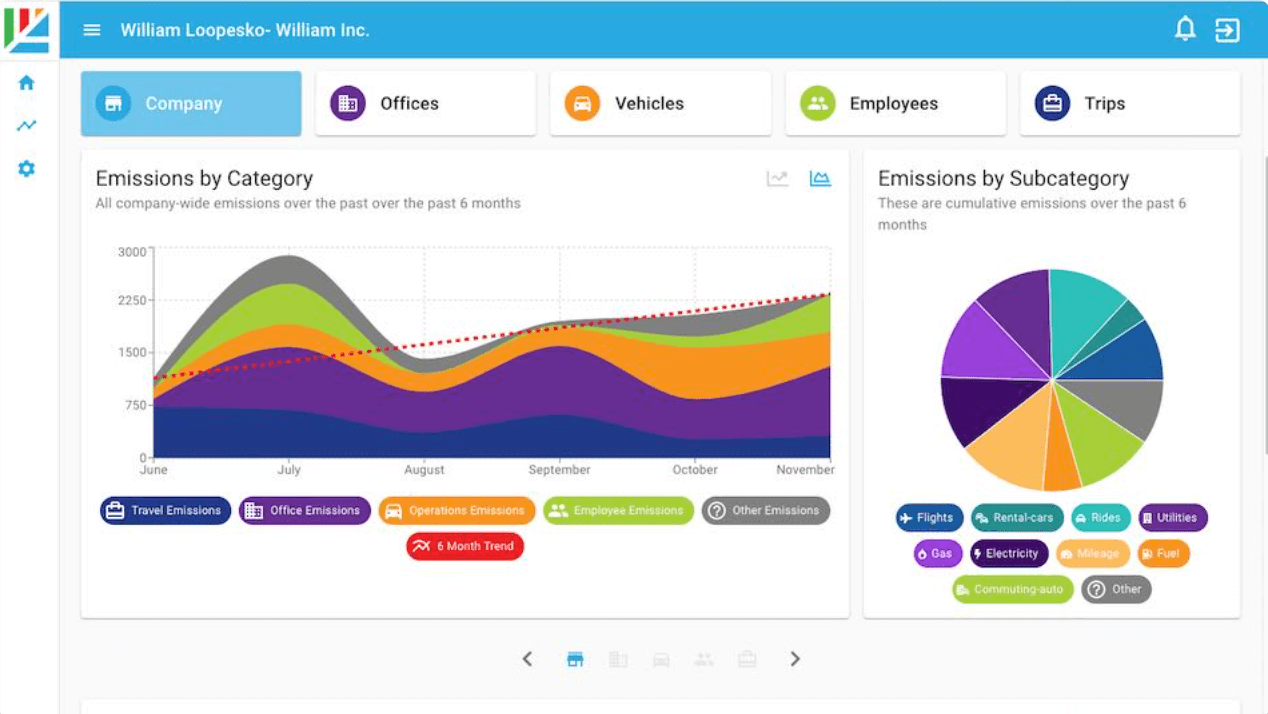
Source: aclymate.com
Here at MindK we also build an energy and ESG compliance management for our client CemaSYS. The solution we developed helps companies manage and report all the sustainability and environmental information. The system provides an interactive dashboard to help users set up, personalize, and keep track of their energy reduction initiatives. After importing historical data, it allows for visualizing the impact of different scenarios on long-term performance.
Energy consumption efficiency
Energy efficiency is one of the top priorities among businesses and governments. For example, in the USA many states have defined Energy Efficiency Resource Standards (EERS) around energy consumption. In Europe, there is an Energy Efficiency Directive focused on necessary energy efficiency at all stages of the energy chain, including energy generation, transmission, distribution, and end-use consumption.
Among the illustrative examples of the systems able to face these challenges and which become more and more popular among tech startups are energy management systems (EMS). Energy management solutions give actionable data to help companies improve energy efficiency.
For those enterprises that operate a range of major plants, facilities, and buildings an IoT-enabled EMS may ensure significant cost savings. An EMS can monitor and measure energy by using networks of intelligent devices that gather, share, and analyze data, providing insights that allow a business to proactively apply actions to cut energy consumption, better manage resources, and reduce the risk of outages and breakdowns.
Green Pocket is a German-based startup that provides a system for energy consumption visualization and management. The solution is well-suited both for residential customers and small enterprises like utility businesses, as it brings clarity and transparency to users’ energy consumption. It allows users to save energy based on the information they acquire and for both public and business utilities.
Source: greenpocket.com
At MindK we also have experience in creating energy management systems. Among the examples is an Information Energy Monitoring System (ICE) that helps local governments to improve energy efficiency and optimize spending. This system allows assessing energy and water consumption efficiency, as well as transferring this data to providers and regulatory bodies. The system is enriched with an IoT module that allows managers to remotely track heat consumption and take readings from utility meters, and helps consumers to reduce energy spending via timely and accurate reporting. Thanks to this solution, one region alone managed to save over $600,000 a year.
Renewable energy reliability
In spite of the fact that renewable energy resources like solar, wind, hydro, tidal, geothermal and similar have a huge potential to overcome a number of energy issues, including the above-mentioned ones, they have one serious challenge – weather dependence.
The overproduction or shortage of energy depending on the weather conditions makes the reliability of the renewable energy sources questionable. So, the conservation and use of the surplus energy formed under favorable weather conditions during off-peak hours is one of the main prerequisites for a full-scale transition to clean energy resources. Apart from that, for integrating wind and solar power generating resources into the grid, especially at high penetration levels, accurate weather forecasting is critical too. That’s why smart weather tools that provide weather forecast analysis on short-term and long-term timescales are paramount in this case.
The Windbreak, for example, an Israel-based startup, is creating weather-based AI (Artificial Intelligence) technologies to forecast renewable energy generation. The system uses machine learning, deep neural networks, and advanced forecasting to generate power. Such an approach allows to boost the efficiency of wind and solar power plants, as well as reduce cost and provide environmental stability.
One more startup that is worth mentioning is ANNEA. It is a renewable energy condition-based predictive and prescriptive maintenance tool for detailed analytics. Through artificial intelligence, physical modeling, and normal behavior modeling, it creates digital twins of each component of renewable energy power plants for failure prediction, energy production forecasting, and performance optimization.
Source: annea.io
Grid management
Following energy generation and storage, there is one more challenge – grid management. The so-called “European super grid”, for example, is a hypothetical future super grid that would connect several European countries with the bordering regions. This concept would provide a lot more flexibility, especially for renewable energy, because there are always countries that are more “sunny” or “windy”. However, the intersection of grid technology and renewable energy presents a relevant challenge, as the growing contribution of renewables requires a new approach to grid management, especially in areas where renewable energy is abundant.
The solutions are not long in coming. For example, Envelio is a renewable energy technology startup based in Germany that provides an Intelligent Grid Platform (IGP). The Intelligent Grid Platform converts electrical grids into smart grids that are digital, flexible, and interactive. It applies machine learning, Big Data analytics, and optimization algorithms to allow grid planning and operation management processes caring out digitally and autonomously. As a result, the time it takes to evaluate new connection points for distributed generation is decreased from days to minutes.
Source: digitaleurope.org
Optimizing energy trading
What we see now is that large-scale power plants are being replaced by small-scale renewable energy providers, resulting in a more decentralized energy system. This leads to another challenge, that is, the need to optimize energy trading, taking into account the decentralization trend.
According to one of the latest Deloitte reports, Peer to Peer (P2P) energy trading has the potential to be one of the key catalysts for change. The P2P concept establishes an online marketplace where prosumers and consumers can buy and sell electricity at their agreed-upon price without the need for an intermediary.
Structure of P2P electricity trading model
Source: Peer-to-peer electricity trading: Innovation Landscape Brief
Such a golden opportunity immediately caught the attention of startups and energy innovators. For example, an Australian-based blockchain startup WePower connects energy purchasers (end-users and investors) with green energy producers directly, allowing them to acquire energy at below-market costs in advance. Lumenaza, a German-based startup, in turn, also allows P2P energy sharing and communities on a local, regional and national level.
There are also startups like Enspired from Austria that suggest fast and data-driven energy trading within the energy efficiency segment. It applies self-learning models to provide fast trading strategies and direct access to intraday markets.
Another Europe-based marketplace operator within the smart energy sector is Tibber. This supplier allows customers to buy the cheapest electricity at any point of the day and see real-time analytics on energy usage in one solution. Recently the startup raised €55 million from investors like the San Francisco-based Founders Fund which is famous for its early investments in Facebook, SpaceX, Spotify, and Airbnb.
Get ready for upcoming renewable energy challenges with technology
The fast-changing energy landscape, as you see, provides a number of challenges, as well as huge possibilities. After analyzing Europe’s energy crisis and a number of problems that are already being solved by emerging smart energy startups, we can conclude that the main goals of energy technology innovation are decarbonization, decentralization, and digitalization of energy resources.
Moreover, the potential for energy technology startups and companies is rapidly expanding, from rising renewable energy generation in residential, commercial, and industrial buildings, to widespread use of smart energy management systems and similar innovations.
When you want to build a solution to help businesses manage their energy consumption and move faster toward carbon neutrality – the MindK team is here to help. We have experience in implementing data collection from sensors, smart meters, and other sources, developing mathematical formulas for analyzing, forecasting, and tracking energy consumption, and building user interfaces that display real-time data. Just share your project idea, and we’ll get back to you to discuss the details.
